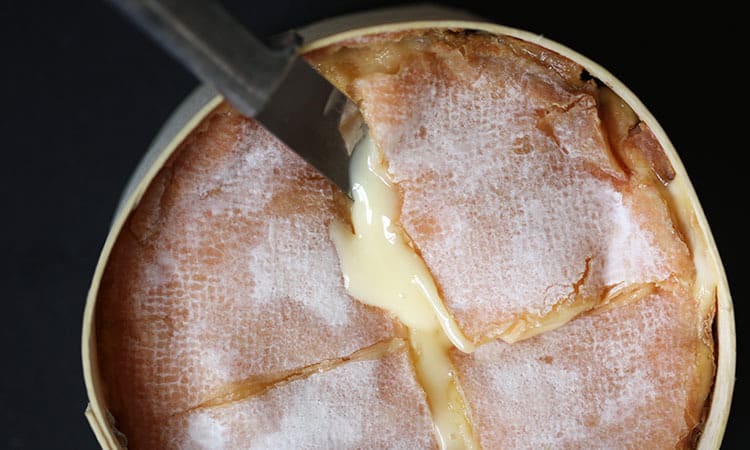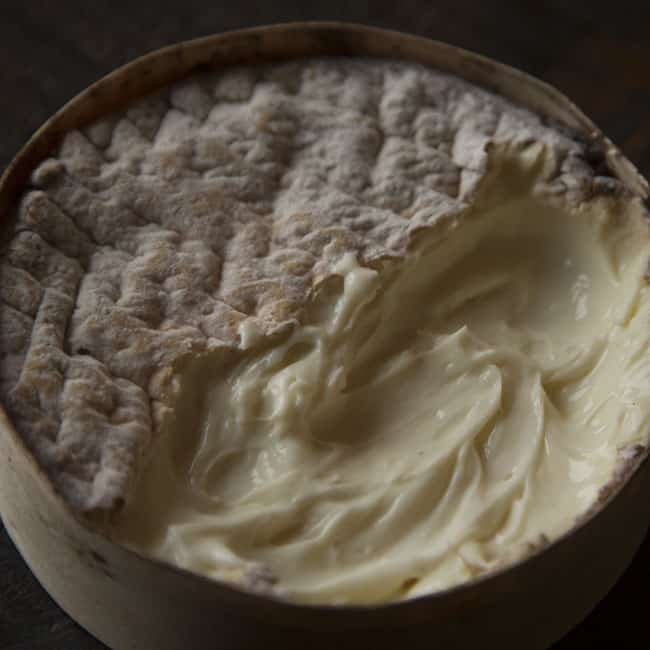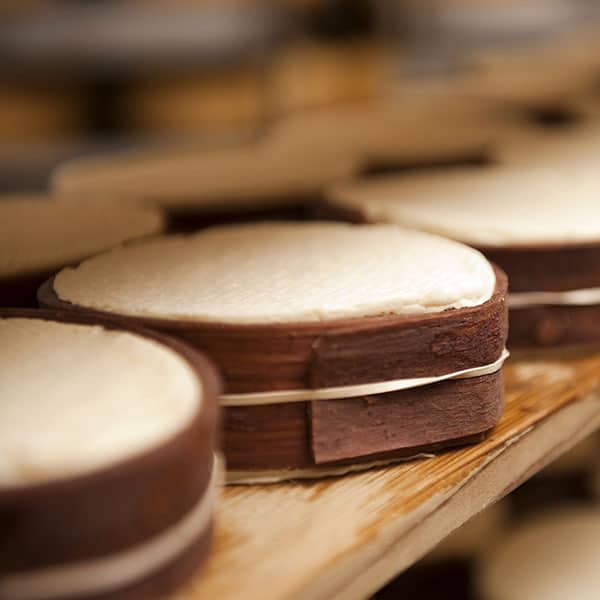
Winter is one of the best seasons for cheese. With shorter days and colder nights, the heartier flavors and textures are so, so comforting. Topping the holiday wish list of many a curd nerd is Vacherin Mont d’Or (also known as Vacherin du Haut-Doubs in France).
Named for the 1,463-meter mountain straddling the French and Swiss borders, this supple winter cheese may date back as far as the 13th century, when written records found in the French Haut-Doubs region show recipes for small rounds of cheese wrapped in local wood. History knows for certain Mont d’Or was a favorite at the table of Louis XV in the eighteenth century.
Cheeses like Mont d’Or take advantage of the shift in a cow’s winter diet. During the spring and summer months, the animals graze on fresh grasses and wildflowers, producing the greatest volume of milk they will make all year. This milk is usually dedicated to the production of larger wheels of alpine cheese like Gruyère d’Alpage AOP in Switzerland, and Comté AOC in France.
Once the grazing season concludes and the animals have descended from the mountain to their winter home (in a glorious ceremony called dèsalpes), their diet becomes centered on hay. This change results in milk that is higher in fat and protein. Because less milk is made when not producing offspring, there isn’t enough to continue producing the larger alpine wheels. The solution? Make smaller wheels of cheese that are soft, creamy, and amazing.
Mont d’Or can certainly be enjoyed raw, but it really is something special when baked. Here’s the plan. Preheat an oven to 400F. Wrap the cheese (still in the spruce container) in tinfoil, leaving the top of the cheese uncovered. Make a few small incisions in the top of the cheese, pour in a splash (or two) of dry white wine, add a pinch of white pepper, and bake for twenty minutes or so. Serve it immediately with boiled potatoes, charcuterie, and plenty of chilled wine.
If you’d like to try the Mont d’Or experience but prefer to keep your cheese local, you’re in luck.
In Vermont, Jasper Hill Farm’s Winnimere takes inspiration from Vacherin Mont d’Or, only being produced in the winter months. This 24-ounce washed-rind cheese is brined, banded with spruce harvested from local trees, and aged for 60 days until it is wonderfully goopy and totally scoopable. The best way to enjoy this gorgeous cheese? Peel off the top layer and simply scoop out the velvety interior with a spoon, then bask in flavors of sweet cream, bacon, and even a touch of spruce. Pair this with a meaty, smokey red wine or porter-style beer and a roaring fire.
Uplands Cheese Company in southern Wisconsin also looks to the French Alps for winter cheese inspiration. Their Rush Creek Reserve is only made from September through November each year. Weighing in at 12 ounces this delicate wheel is made with raw milk from their own herd of selectively cross-bred cows. After brining, wheels are hand-wrapped in spruce that has been boiled and dipped in a solution of yeasts and molds which will help ripen the cheese over the 60-day aging period.
The luxurious Rush Creek Reserve is best enjoyed by slightly warming the wheel, peeling off the top rind, and digging in with morsels of fresh bread. The sublime and savory flavors of smoked meats, sour cream, and hints of grass will have you forgetting all about the weather outside. Uncork a slightly-chilled bottle of red Poulsard from the Jura region of France and let it snow!







Difference between Winnimere and Harbison. Both Jasper Hills.
Produced only during winter months, Winnimere is a washed-rind cheese that during its maturation of about 2 months, is regularly brushed with a cultured salt brine.
whereas Harbison is a delicate bloomy rind cheese. Both cheeses are held together by spruce bark. The bark not only acts as a support for the cheese, it also lends a woodsy essence to the paste.
For more, visit our cheese library– https://culturecheesemag.com/cheese-library/Winnimere